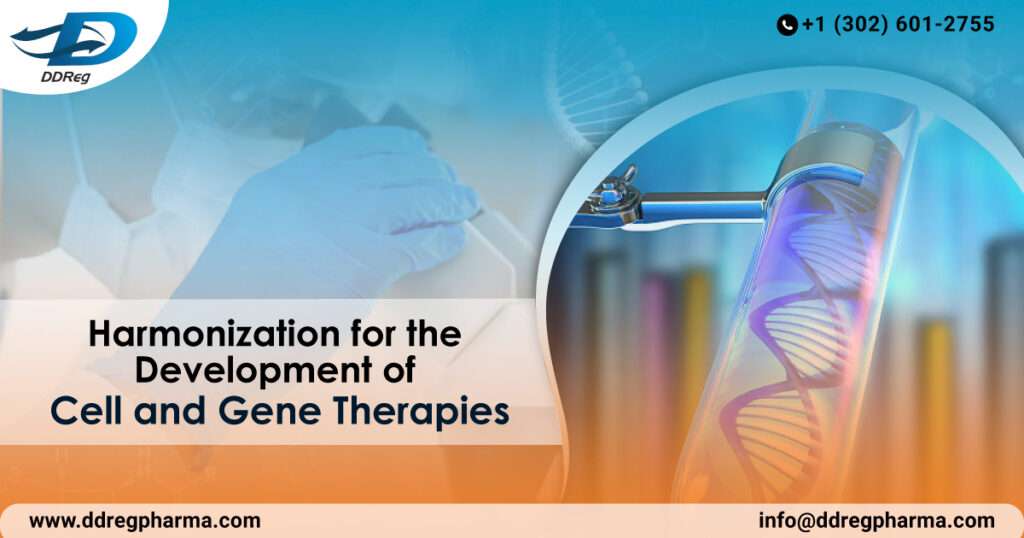In the emerging boom of biopharmaceuticals, the remarkable advancements in cell and gene therapy (CGT) have ushered in a new era of medical possibilities. These groundbreaking treatments have the potential to revolutionize medicine, offering hope to patients with previously untreatable conditions. However, with innovation comes the need for strong regulatory frameworks to ensure safety, efficacy, and accessibility.
The US FDA and Health Canada sponsored an international meeting, organized by the ICH, in which Health Canada officials and industry key representatives met to develop harmonized guidelines on cell and gene therapies and improve the design of pharmacoepidemiological studies using real-world data (RWD) that evaluate new medicines.
Need for Regulatory Harmonization
With an impressive 1,400 advanced therapies currently in clinical trials worldwide, and a growing number of patients benefiting from treatments such as AAV-based gene therapies and CAR T-cell therapies, the urgency for a unified regulatory framework has never been greater and promotes the critical need for harmonized guidelines in this rapidly evolving field.
In the lead of this action, Kathleen Francissen, who is the global head of PT cell and gene therapies at Genentech, also a rapporteur for ICH Cell and Gene Therapy Discussion Group (CGT DG), and Melissa Kampman, Manager of the Marketed Health Products Directorate for Health Canada gave insight into plans and timelines for issuing harmonized documents marking tremendous progress in regulatory convergence.
Although there has been significant advancement, extant ICH guidelines on traditional biologics are inadequate in dealing with distinctive complexities that come with advanced therapy medicinal products (ATMPs) thereby necessitating a science-based approach to regulation to ensure consistency across regions and facilitate safe and efficient development and access to these revolutionary treatments.
The Role of the CGT DG
The Biotechnology Innovation Organization (BIO) recommended establishing ICH Cell and Gene Therapy Discussion Group (CGT DG), which were subsequently endorsed by the ICH Management Committee in May 2023. The group embarked on its journey with a kickoff meeting in October 2023 and substantiated this through endorsing a work plan in December same year, it is planned to deliver a strategic roadmap that will outline areas of harmonization and potential revisions to existing guidelines specific to CGT products by June 2025.
ICH M14 began the journey of creating a harmonized guideline on which ICH addressed inefficiencies that have been affecting both sponsors and regulators. The availability of exponentially growing real-world data globally underscores the importance of international harmonized guidelines.
The PEpiDG Initiative
The foundation of the pharmacoepidemiology discussion group (PEpiDG) under ICH M14 reflects a concerted effort to bridge regulatory disparities and streamline post-approval studies. Through a comprehensive gap analysis, the PEpiDG endeavors to identify regulatory gaps and facilitate harmonization across diverse regulatory aspects. With feedback from over 600 stakeholders, the draft guideline undergoes iterative refinement, with plans for its adoption as a Step 4 guidance by May 2025.
Conclusion
In the course of medicine’s evolution, gatherings, such as the ICH regional meeting, are important landmarks. Forging ahead with harmonized guidelines and leveraging real-world data moves stakeholders beyond just advancing the field of cell and gene therapies but also reaffirming their commitment to patient safety and innovation on a global scale.
DDReg brings 15 years of experience in navigating the complex web of regulations to facilitate biotechnology product approval and market access. Reach out to our experts for end-to-end regulatory services to support first time-right drug and biological product submissions. Read more about gene therapy here: The Advancements of Gene Editing Technology for Safe and Effective Gene Therapy Products

